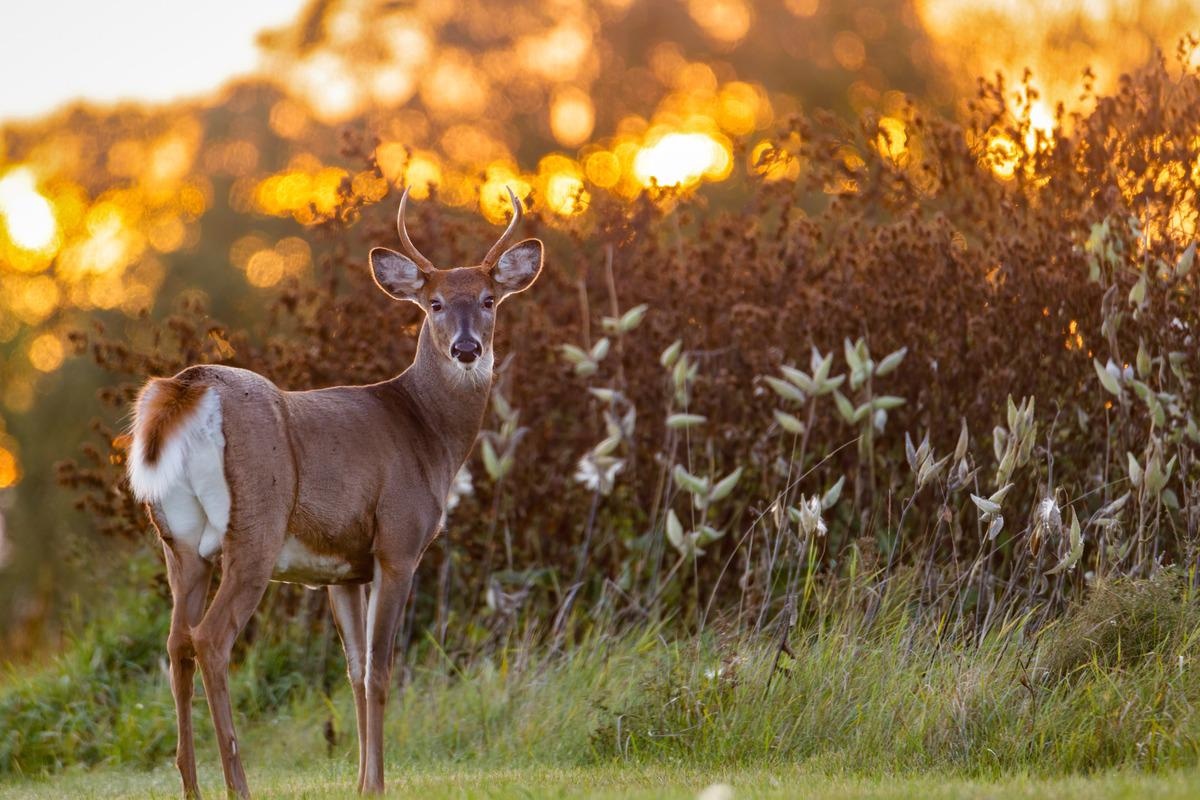Severe acute respiratory syndrome coronavirus 2 (SARS-CoV-2), the causative agent of coronavirus disease 2019 (COVID-19), was originally discovered in late 2019 in Wuhan, China, and has since spread worldwide, with over 401 million COVID-19 cases and over 5.76 million deaths.
 Study: Multiple spillovers from humans and onward transmission of SARS-CoV-2 in white-tailed deer. Image Credit: Aaron J Hill/Shutterstock
Study: Multiple spillovers from humans and onward transmission of SARS-CoV-2 in white-tailed deer. Image Credit: Aaron J Hill/Shutterstock
The global spread of SARS-CoV-2 among humans creates the possibility of spillover transmission to nonhuman hosts. SARS-CoV-2 infections have been found in domestic pet animals, zoo animals, and farmed animals. In theory, SARS-CoV-2 infection of a nonhuman animal host may cause the establishment of a reservoir, driving the evolution of new variations with the potential for human spillover. Workers in mink farms have been characterized as experiencing this type of transmission cycle. However, there is yet to be evidence of extensive SARS-CoV-2 transmission in a free-living animal species.
A previous discovery that 40% of free-living white-tailed deer in the United States had antibodies against SARS-CoV-2 sparked the current investigation published in PNAS. SARS-CoV-2 transmission has also been documented in experimentally infected deer in recent investigations. The scientists tested 283 retropharyngeal lymph node (RPLN) samples collected from free-living and confined deer in Iowa from April 2020 to January 2021 to see if infection and subsequent transmission of SARS-CoV-2 in deer happens in nature.
The study
The researchers looked for the temporal trends in SARS-CoV-2 RNA recovery from deer in the data set. SARS-CoV-2 RNA was not found in any of the 17 RPLNs acquired from deer between April and August 2020. SARS-CoV-2 was first identified in a captive deer killed on a wildlife preserve in south-eastern Iowa on September 28, 2020. A second positive sample was detected in a free-living deer killed in a road accident 300 miles away in Woodbury County, on the state's western border, on September 30, 2020. SARS-CoV-2 RNA was found in two of the 39 samples collected in September.
In October 2020, SARS-CoV-2 RNA was detected in four of 70 RPLNs recovered from deer, one each from Des Moines and Pottawattamie counties, and two from Woodbury. The positivity rate in deer quickly increased, with 22 of 77 RPLN samples possessing SARS-CoV-2 RNA in November 2020 and 61 of 75 samples positive in December 2020, coinciding with the primary peak of infection in people in Iowa.
At the end of the regular shooting season, all five deer RPLN samples were positive for SARS-CoV-2 RNA during the second week of January 2021. Specifically, 80 of 97 deer RPLN samples from around the state were positive for SARS-CoV-2 RNA during the seven weeks beginning November 23, 2020, and ending January 10, 2021, the conclusion of hunting season. Importantly, the data demonstrate that deer RPLN samples have a high viral RNA copy number, suggesting that many deer had a high viral load.
Seven counties had at least ten samples collected, with all 11 specimens from Allamakee County and 21 of the 28 samples from Appanoose County being proven to be SARS-CoV-2 positive. None of the nine samples from Black Hawk County or the six RPLN samples from Henry County were positive. While the causes of this variation in PCR positive reaction rates are unknown, it could be due to the small sample size and insufficient power.
On the other hand, the time of the collection in connection to the spread of SARS-CoV-2 in deer could be a factor. The samples from Henry County, for example, were gathered in the early phases of the pandemic, in April and May 2020, much before the first positive sample was found in deer. Similarly, all nine RPLN samples analyzed from Black Hawk County were taken before the peak of SARS-CoV-2 cases in humans in Iowa in mid-November. These findings imply that SARS-CoV-2 RNA is widely present in deer across Iowa, with strong evidence of temporal clustering.
Implications
These findings highlight the importance of a better knowledge of the human-animal molecular and ecological interface and its significance to infection transmission patterns to forecast or prevent the next pandemic and control infectious illnesses with pandemic and panzootic potential. As a result, the authors conclude that a more proactive and rigorous "One Health" strategy is required to understand better the ecology and development of SARS-CoV-2 in deer and other animal species, including active surveillance and longitudinal investigations.